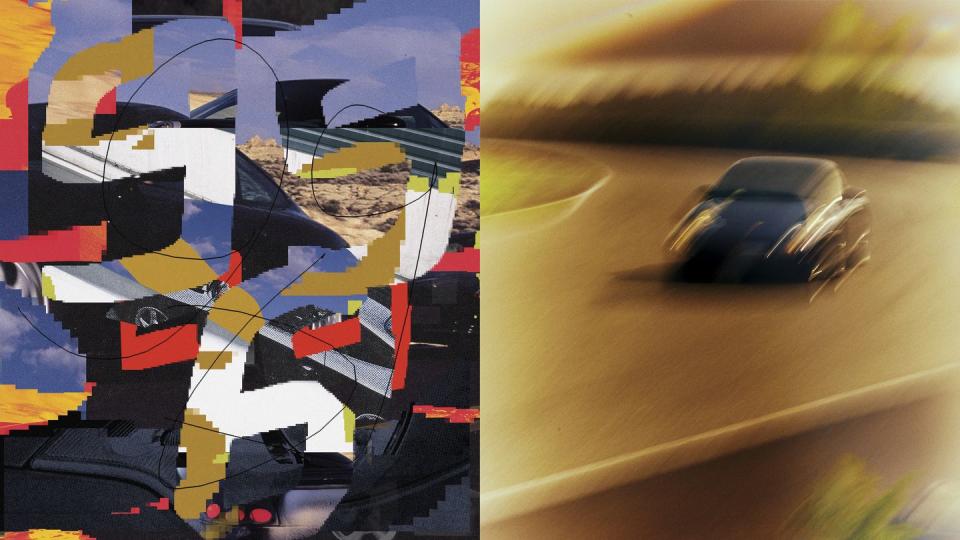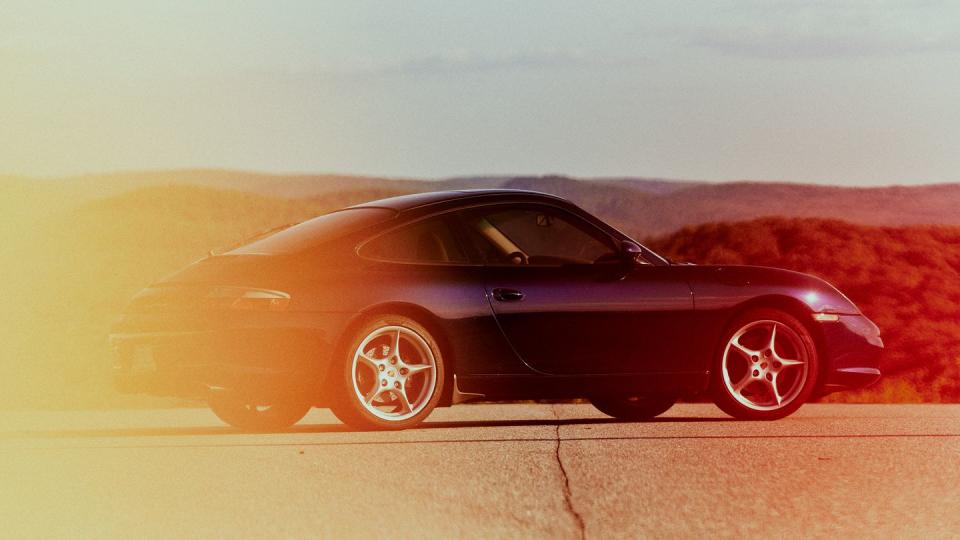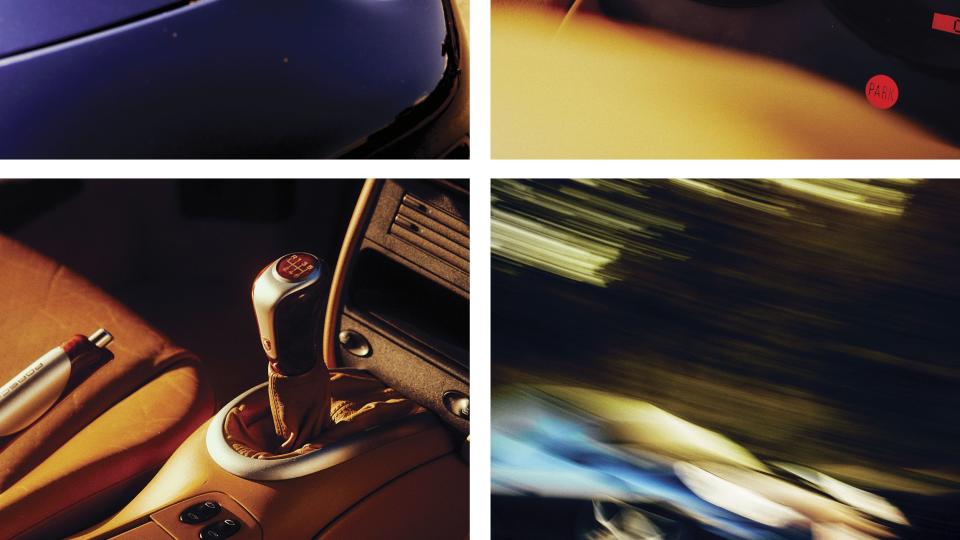The Nerds Were Wrong About the Porsche 996


Long slandered as the worst of eight generations of 911, too often by people who’ve never sat in one, the 996 is, in fact, a great sports car. There, I said it. The 996 represents a clean break with Porsche’s air-cooled engineering traditions and a sturdy bridge between the modest-powered 911s of old and the weaponized assassins of today. And it’s generally more attainable than either.
This story originally appeared in Volume 18 of Road & Track.
Slaloming a rear-drive 2002 911 Carrera through the black-diamond elevations of Palmer Motorsports Park in Massachusetts puts old hurts in the past, like a family grudge that seems embarrassingly petty once healed. To wit: Remember how you hated those fried eggs? Onkels and Tantes got very upset in 1998 (1999 for America) when an all-new 996 showed up without the round headlamps that had adorned every 911 since 1963. Designed by Pinky Lai under chief designer Harm Lagaay, the 996’s modular headlamps featured milky lenses and yolky turn indicators. (Our face-lifted 996.2 version, arriving in 2002, spatula’d that away with a cleaner design like that of the Turbo models.)
Worse, Porsche’s switch to a water-cooled engine for the 996 marked the end of the deified air-cooled flat-six. It was a necessary change in pursuit of improvements in performance, efficiency, emissions, and HVAC. Still tough to take, especially in a house full of racing trophies earned by these joyously clattering engines. The grumbling never went away entirely—witness the air-cooled exclusivity of Luftgekühlt—but it eased a bit when the 996’s standard 3.4-liter flat-six hit the 300-hp mark. Air-cooling fins gave way to a performance-boosting DOHC six with four valves per cylinder, improved midrange punch, and better fuel efficiency.

Cornered by an aging lineup and spiraling production costs, and with the company’s survival at stake, Porsche embarked on a first for any sports-car maker: It would develop a new entry-level Boxster and 911 in tandem, with a shared platform and mirror-image front ends. Toyota-style production management slashed costs and kicked off the profitable future Porsche enjoys today. But while the Boxster arrived first, to global acclaim, the 911 was savaged. Unforgiving sorts will raise the notorious intermediate-shaft glitch or the plasticky Nineties interior.
Spurring this Porsche today makes one wonder what all the complaining was about: The 996 is faster, pulls harder, and is more on point than its fabled 993 predecessor. It’s roomy, quiet, and comfortable yet still feels two sizes smaller than today’s GT-scale 911s. At 2910 pounds, a base Carrera, with its snickety six-speed Getrag manual, weighs 110 pounds less than a 993. That’s despite plumbing for 20 liters of coolant and a 7.3-inch-longer and 1.2-inch-wider body. It boasts a 45 percent stiffer chassis, an improved suspension, a slippery 0.30 drag coefficient, a 4.8-second squirt to 60 mph, and a 174-mph top speed. It was also safer at speed, with the introduction of Porsche Stability Management.
What stands out during laps of Palmer Motorsports Park (where I’m tailing a local Porsche Club of America president in a track-prepped 993) is that the feelsome steering demands fewer corrections than any earlier 911. This particular Lapis Blue Metallic Carrera with a beige leather interior is a pristine example chosen by owner Jim Meehan to be his first Porsche. The Boston-area attorney bought it in 2021 for $40,000, a square deal these days for a 19-year-old 911 with 19,000 miles on the odometer. It listed new for $80,580, with options including 18-inch alloys and a charmingly bougie wood-and-aluminum shift knob and parking-brake lever.

The cost-conscious interior is still mildly cheesy, with its Taurus-like Chiclet switches, but just old enough to feel vintage, down to its cigarette lighter and ashtray. There’s no Sport Chrono stopwatch, digital displays, or Bluetooth. I could stare at that classic quintet of analog gauges all day, the tach’s crimson baton sweeping to 7000 rpm.
Fans dismayed by recent Porsche prices can avoid that raked-over feeling with a smartly upgraded 996.2, the best deal left. Beginning in 2002, a stroked 3.6-liter six brought output to a robust 320 hp with the help of a two-stage VarioCam lift borrowed from the 2001 911 Turbo. Torque rose 15 lb-ft to 273, and 0 to 60 dropped to 4.6 seconds, just 0.6 second behind a 2023 911 Carrera. Reworked front and rear bumpers reduced aero lift by 25 and 40 percent, respectively.
Meanwhile, the 415-hp 996 Turbo offers huge bang for the buck, and the 996 GT3, introduced to the U.S. in 2004, feels more raw and lively than the modern version. Then there’s my dark-horse favorite, the Carrera 4S, which pairs all-wheel drive with the wide-body Turbo look, along with beefier brakes and suspension.
Each of these offerings is desirable, including the bone-stock standard car. Come on out of the shadow, 996. Your time has finally come.

A car-lover’s community for ultimate access & unrivaled experiences.JOIN NOW Hearst Owned
You Might Also Like

 Yahoo Autos
Yahoo Autos 